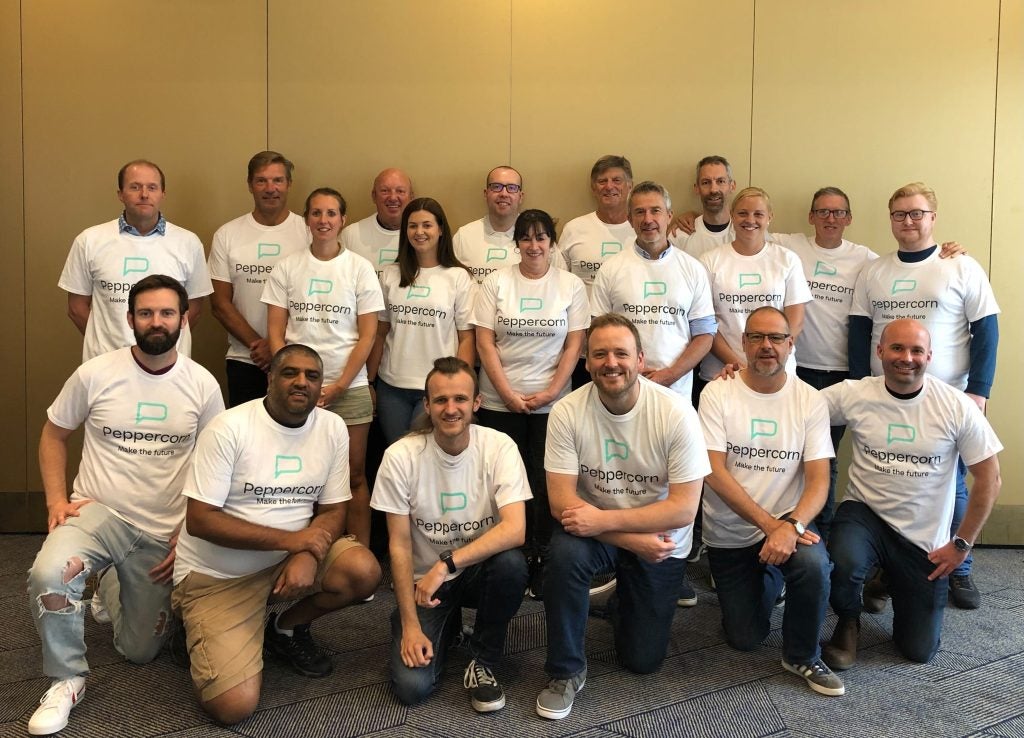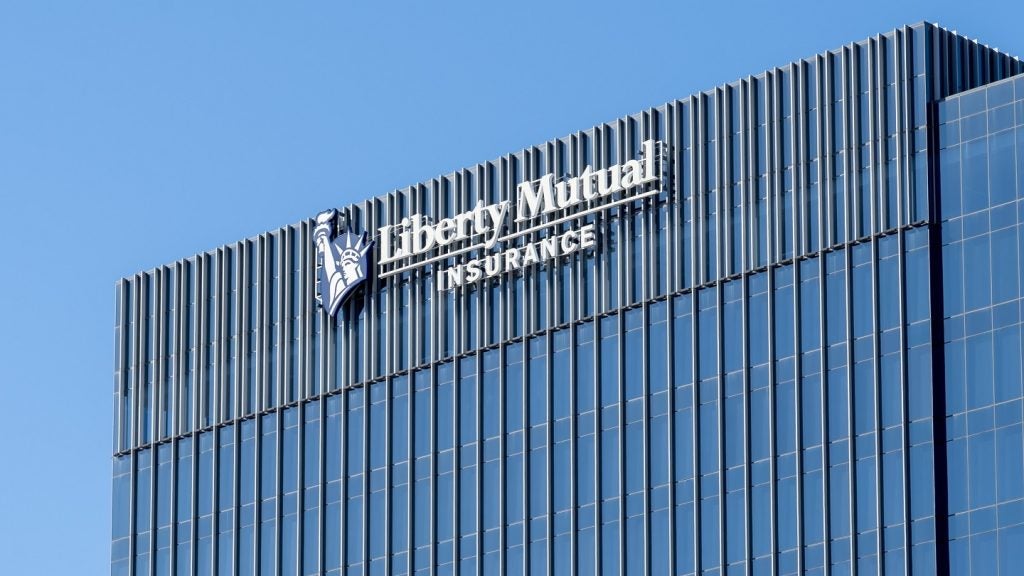Hammered by the financial
crisis, Aegon has made solid progress in restoring its financial
stability, including repaying a third of the assistance extended to
it by the government of the Netherlands. It is now embarking on the
second phase of its restructuring aimed at considerably enhancing
its capital efficiency.
 Aegon CEO Alexander
Aegon CEO Alexander
Wynaendts has unveiled a strategy aimed at accelerating the
restructuring the Dutch insurer’s global operations over the next
five years in move designed to increase profitability and reduce
risk.
In a media conference, Wynaendts explained that
the restructuring represents a follow-through on a process
commenced in 2008 and encompasses reallocation of capital and
increased focus on Aegon’s core life insurance, pensions and asset
management businesses.
“Consistent with our strategy, we are now
taking further steps to focus on our core business and to continue
to allocate our capital to businesses and markets that offer higher
growth and returns over the long-term,” said Wynaendts.
Aegon’s initial restructuring got under way in
June 2008, two months after Wynaendts, its former COO, was
appointed CEO and tasked with repairing the significant damage
Aegon sustained during the financial crisis.
How well do you really know your competitors?
Access the most comprehensive Company Profiles on the market, powered by GlobalData. Save hours of research. Gain competitive edge.

Thank you!
Your download email will arrive shortly
Not ready to buy yet? Download a free sample
We are confident about the unique quality of our Company Profiles. However, we want you to make the most beneficial decision for your business, so we offer a free sample that you can download by submitting the below form
By GlobalDataThe extent of the damage was illustrated by a
net loss of €1.06bn ($1.3bn) reported by Aegon in 2008, compared
with net income of €2.64bn in 2007.
To prop up the company’s balance sheet, the
Dutch government extended a €3bn loan to Aegon in October 2008. In
August 2009 Aegon raised €1bn through a rights issue which,
together with other actions taken to free-up capital, enabled it to
repay €1bn of the loan in November 2009. Repaying the remaining
€2bn is a key priority, said Wynaendts.
Aegon returned to profitability in the third
quarter of 2009 and reported net income of €393m for the year with,
notably, help from cost reductions which totaled €250m, €100m above
its original target.
From a sales growth perspective, Aegon reported
lower new life sales in 2009: €2.05bn, down 22.3% from €2.63bn in
2008 and down 37.5% from sales of €3.27bn in 2007.
 Transamerica Re could go
Transamerica Re could go
Looking likely to be on the selling
block as part of its capital reallocation strategy is Aegon’s life
reinsurance business, Transamerica Reinsurance. Aegon is “exploring
strategic options, including identifying a suitable buyer,”
revealed Aegon Americas CEO, Mark Mullin.
Acquired by Aegon in 1999, US-based
Transamerica Re ranks third in the US life reinsurance market,
where it has a 20% market share, and seventh globally. Aegon
reported that at the end of 2009, Transamerica Re had a book value
of €1.6bn ($1.96bn) and an embedded value of the same amount.
Outside the US, the reinsurer has operations in Mexico, Chile,
Bermuda, Ireland, France, Spain, Korea, Japan, Taiwan, and Hong
Kong.
Aegon also has a significant presence in the US
life market, where in 2009 it recorded new life sales of $796m.
Aegon ranked fourth in terms of individual term life sales, seventh
in terms of universal life sales and 12th in terms of variable
annuity sales.
In the US, Aegon has already begun a
rationalisation programme, which in 2009, said Mullin, saw cost
savings of $200m achieved partly through cutting staff numbers by
800. Aegon’s employs 14,000 people in its US, Canadian and Latin
American operations, half the group’s total staff complement.
Aegon is targeting a further $100m in cost
savings, which could include mergers of Aegon’s seven US life
insurance units. In order of asset size these are: Transamerica
Life, Monumental Life, Transamerica Financial Life, Merrill Lynch
Life, WRL Life, Stonebridge Life and ML Life.
The logical choice as a unified brand would be
Transamerica which, according to Aegon, is the second most
recognised insurance brand in the US.
UK shake-up
Also receiving major attention in
Aegon’s restructuring will be the UK, source of €1.05bn (52%) new
life insurance sales in 2009 – but a meager €6m net profit. Aegon
entered the UK market in 1991 with the acquisition of Regency Life,
followed in 1994 with the acquisition of what has become the core
of its UK operations, Edinburgh-based Scottish Equitable.
Setting out proposed changes in the UK, home to
2m of its customers, Aegon UK COO Adrian Grace made it clear that a
“full product suite strategy is no longer appropriate.” Among
Aegon’s objectives in the UK is to cut cost by a quarter or some
£81m ($115m) by 2011.
To meet its objectives Aegon UK will focus on
growth markets where it already has a leading position – the
at-retirement and workplace savings markets – where, according to
Grace, Aegon UK already has relationships with 28,000 employers and
some half a million employees.
However, Aegon UK will withdraw from the bulk
annuities market, where it feels pricing conditions do not meet its
profitability targets. This follows its withdrawal from the group
risk market in June 2009.
Rationalisation in the UK is aimed at improving
return on capital from 2.7% in 2009 to between 8% and 10% by 2014
and generating cumulative operating cash flow of between £600m and
£650m between 2010 and 2014. Pressed by the media, Wynaendts
conceded that there would be a “significant” impact on Aegon UK’s
4,700-strong workforce.
Aegon is also on a restructuring drive in its
home market, the Netherlands, where it recently sold its funeral
insurance business to Dutch investment firm Egeria for €212m. In
addition, Aegon has terminated its tied agent network in the
Netherlands and increased its focus on direct distribution.
Seemingly on a strong recovery track, Aegon
Netherlands recorded a net profit of €223m in the first quarter of
2010, almost equaling the €241m reported in 2009 as a whole. Among
drivers was a reduction in operating costs, which fell from €217m
in the first quarter of 2009 to €182m in the first quarter of
2010.
Aegon Netherlands ranks second in the country’s
group pensions market and fifth in its individual life market.
 Geographical
Geographical
balance
Fundamental to Aegon’s strategy is also
a more balanced geographical spread. To this end, Wynaendts said
capital will be reallocated to growth markets, especially in
Central and Eastern Europe (CEE), Asia and Latin America.
Aegon has already established a solid position
in the CEE life market, where its first move was into Hungary in
1992 where it now ranks as the second-largest life insurer. Between
2003 and 2007 Slovakia, Czech Republic, Poland, Turkey and Romania
were added. Aegon reported total premium income of €342m from the
CEE in 2009.
In Western Europe, Aegon has identified Spain
as a key target market for expansion. Aegon has a long history in
Spain, which it first entered in the 1980s and where today it has
five units as well as a 35% stake in La Mondiale Participations, a
joint venture (JV) with French insurer La Mondiale dating back to
2002. In addition, Aegon has distribution alliances with Spain’s
top five banks: Caja de Ahorros del Mediterráneo; Caja Navarra;
Caja de Badajoz; Caja Cantabria; and Caixa Terrassa.
For Aegon, Latin America is also not a new
market as Transamerica Re already has a well-established presence.
In the life market, Aegon’s first entry came in Mexico with the
acquisition of a 49% stakes in Seguros Argos and pension fund
management company Afore Argos in late 2006.
Aegon’s first entry into the Brazilian life
market came with completion of its acquisition of a 50% stake in
Mongeral Seguros, Brazil’s sixth-largest independent life insurer,
in May 2009. Mongeral reported total revenue of €107m in 2008.
In Asia, Aegon’s growth strategy has been
furthered by recently established JVs in the Indian and Japanese
life markets. Specifically in India, August 2008 saw the launch of
Aegon Religare Life Insurance, in which Aegon has a 26% stake,
Indian financial services company Religare a 44% stake and Indian
media company Bennett & Coleman a 40% stake.
In Japan, Aegon and Japanese insurer Sony Life
were granted the go ahead in August 2009 for their 50:50 JV, Aegon
Sony Life Insurance, to commence operations. Initial focus is on
variable annuity products with distribution through Sony Life’s
agency force and banks.
The new Asian ventures join Aegon’s Chinese
operation Aegon-CNOOC, a 50:50 JV with the China National Offshore
Oil Corporation, which opened it first office in 2002. IN 2009
Aegon-CNOOC ranked as China’s sixth largest foreign insurer in
terms of premium income.
Asian operations have also undergone some
rationalisation, with Aegon’s sale of its Taiwanese life insurance
unit in mid-2009. The unit, which Aegon established from scratch in
1992, recorded a net loss of €103m in 2008.
 Consolidated
Consolidated
group
A key part of Aegon’s strategy
pre-dating its latest announcements has been managing Aegon as a
single, international company. To this end, members of Aegon’s
management board have been assigned global as well as national
responsibilities and a more global approach both to risk and
capital management has also been adopted.
Among developments that have already flowed
from this was the launch in October 2009 of Aegon Asset Management
(AAM), a new global organisation for its asset management
operations. AAM brought together businesses in the US, the
Netherlands, the UK, CEE and the insurer’s JVs in Asia.
In 2009, Aegon also opened a new European data
centre at its offices in Edinburgh. The centre is aimed at
improving efficiency by bringing together systems in the
Netherlands and the UK. It is intended that operations in CEE will
also be incorporated in future.
Aegon has spared no effort in communicating to
shareholders, analysts and the media its strategic objectives and
progress that has already been made. In 2009 alone meetings with
some 600 institutional investors in 38 different locations were
convened by Aegon.
But so far Aegon has not convinced the major
rating agencies that its fortunes are about to improve anytime
soon. Since the end of 2009 Standard & Poor’s has lowered
holding company Aegon NV’s life insurance operation’s insurance
financial strength rating (IFSR) from AA- at the end of 2009 to A-
with a negative outlook, while Fitch has lowered its IFSR from AA
to A, also with a negative outlook. Moody’s has also lowered
Aegon’s IFSR since the end of 2009, from A1 to A3 with a negative
outlook.
Aegon’s share price continues to reflect
investor caution. At the end of June 2010 it was trading at €4.65
per share, 30% of its high in April 2007 of €15.70. In comparison,
the 30-member Bloomberg Europe 500 Insurance Index was trading at
54% of its 2007 high.
Undoubtedly Aegon’s shareholders and the
insurance industry will be following
the progress of its restructuring with great interest.







